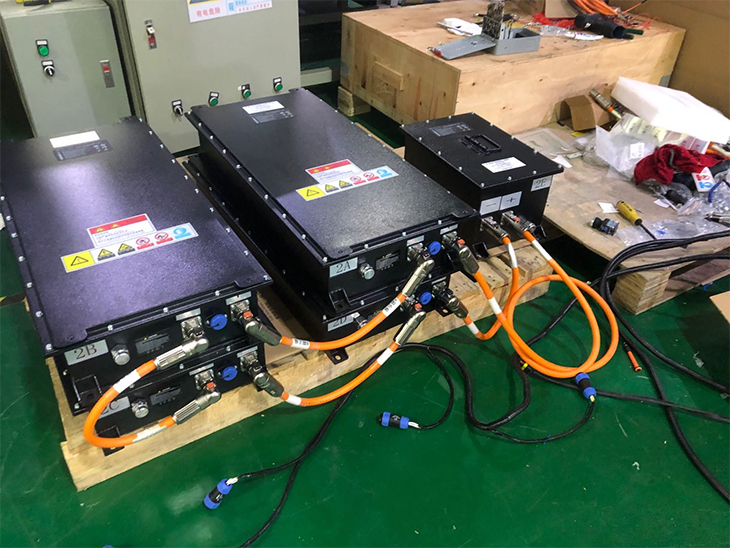- 24
- Nov
Threatening the life and safety of lithium batteries, the truth has been cracked
Traditional electric vehicles mainly use lead batteries as the power core, leading the electric vehicle industry for decades. However, due to their short life span (200-300 cycles), large size, and low capacity density, lead batteries have almost been abandoned in the era of large energy sources. Lithium batteries are popular among people in the new energy industry for their small size, light weight, long life, and high energy density. They have been rated as the most popular energy carrier.
ચિત્ર
Lithium battery is a general term. If it is subdivided inward, it is usually divided according to physical shape, material system, and application field.
According to the physical shape, lithium batteries are divided into three types: cylindrical, soft-packed, and square;

According to the material system, lithium batteries are divided into: ternary (nickel/cobalt/manganese, NCM), lithium iron phosphate (LFP), lithium manganate, lithium cobalt oxide, lithium titanate, multiple composite lithium, etc.;
Lithium batteries are divided into power type, power type and energy type according to the application field;
The service life and safety of lithium batteries vary greatly with different material systems, and roughly follow the following rules.
Service life: lithium titanate>lithium iron phosphate>multiple composite lithium>ternary lithium>lithium manganate>lead acid
Safety: Lead acid>Lithium titanate>Lithium iron phosphate>Lithium manganate>Multiple composite lithium>Ternary lithium
In the two-wheeler industry, lead-acid batteries usually need to be replaced after one to two years of use, and the warranty is that they can be replaced free of charge within six months. The lithium battery warranty is usually 2 to 3 years, rarely 5 years. What is confusing is that the lithium battery manufacturer promises that its cycle life is not less than 2000 times, and the performance is up to 4000 times, but it will basically not have a 5-year warranty. If used once a day, 2000 times can be used for 5.47 years, even after 2000 cycles, the lithium battery is not immediately damaged, there will still be about 70% of the remaining capacity. According to the replacement rule that the capacity of lead-acid decays to 50%, the cycle life of lithium battery is at least 2500 times, the service life is as long as 7 years, and the life is close to ten times that of lead-acid, but you have seen how many lithium batteries can be used for 7 years indivual? There are only a small number of products that have not been damaged after 3 years of use. There is a huge difference between theory and reality. What is the reason? What variable caused such a big gap?
The following editor will take you in-depth analysis.
First of all, the number of cycles given by the manufacturer is based on the test of the single cell level. The life of the cell cannot be directly equal to the life of the battery pack system. The difference between the two is mainly as follows.
1. The single cell has a large heat dissipation area and good heat dissipation. After the Pack system is formed, the middle cell will not be able to dissipate the heat well, which will decay too fast. The life of the battery pack system depends on the cell with the fastest attenuation. It can be seen that good thermal management and thermal equilibrium design are extremely important!
2. The battery cell cycle life promised by lithium battery manufacturers is based on test data at a specific temperature and specific charge and discharge rate, such as 0.2C charge/0.3C discharge at a normal temperature of 25°C. In actual use, the temperature can be as high as 45°C and as low as -20°C.
Charge it once under high temperature or low temperature conditions, the life will be attenuated by 2 to 5 times. How to control the charge-discharge and charge-discharge rate in high and low temperature environments is the key. The life of lithium batteries will be drastically reduced when using high-current chargers or vehicles with high-power controllers.
3. The service life of the battery pack system not only depends on the performance of the battery cell, but also closely related to the performance of other components. Such as BMS protection board software and hardware, module integrity design, box vibration resistance, waterproof sealing, connector plug life and so on.
Secondly, there is a large price gap between lithium batteries and lead-acid batteries. Most of the lithium batteries used in two-wheeled vehicles are batteries that cannot be screened out in power applications such as automobiles and energy storage. Some are even disassembled. Retired from the echelon. This type of lithium battery inherently has certain defects or has been used for a period of time, and the life span cannot be guaranteed.
Finally, even if it is a world-class battery, you may not be able to make a world-class battery pack system. Good-quality, high-performance batteries are just a necessary condition for a high-quality battery pack system. To use good batteries to make a good battery pack system, there are too many links and factors to consider.
The above analysis shows that the quality of lithium batteries in the market is not entirely determined by the battery cell, but by the battery pack system design, BMS software and hardware strategy, box module structure, charger specifications, vehicle controller power, and regional temperature. The result of the synthesis of other factors.
